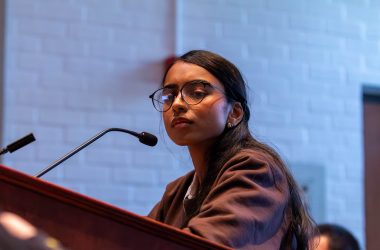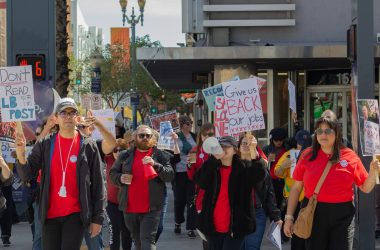Remnants of institutional segregation are generally not thought of as an issue in our western, golden state. After all this is California, a largely democratic blue-state, where seemingly habitual sunshine and coastal beaches attract all types of people.
Our institutions are hailed as some of the most diverse. Including California State University, Long Beach, which was ranked 12th in the nation for awarding baccalaureate degrees to minority students in 2014, up one spot from 2013.
Banners across campus touting the diversity recognition sway proudly in the wind, as a reminder that CSULB exemplifies the “melting pot” of America.
But, a look at the enrollment demographics trends over time signify a phenomenon challenging that notion, if black students are considered a component of diversity.
Black enrollment trends have been on a downswing for the past ten years. From 2003-2013, the percentage of enrolled black students decreased from 5.9 percent to 4.1 percent, according to Rand State Statistics. That trend continued into 2014, according to CSULB demographics, with 3.9 percent of the study body, or 1,444 students identifying as black.
As a black student, that number feels even smaller on a campus of over 30 thousand students.
I am not the only one who has taken notice to the dwindling black student population.
“Little Crenshaw,” a nickname for an informal gathering place of black students in front of the upper campus CSULB dining center that I once called home along side numerous black peers, seems deserted nowadays.
At a black student town-hall meeting on Nov. 19 facilitated by President Jane Close Conoley, many students expressed concern including Rachael Hamlet, an CSULB alumna and current graduate student.
“It is hard for me to get inner-city kids of color here when I’m not all the way comfortable being black on campus,” said Hamlet.
The university has also taken notice of the dwindling black student population, but has been unable to pinpoint exactly why black students are enrolling at such low numbers or where they choose to go instead.
Although, President Conoley pointed to several reasons why black students may not be enrolling, such as a perception of unaffordability and competitive scholarship opportunities.
“It is a problem and if you don’t see people who look like you,” Conoley said. “Some share experiences that can create more loneliness, and you know every freshman, and even senior, goes through that.”
At the end of the town-hall meeting in November, black students huddled outside as the conversation spilled over into a more informal space. Hamlet, in a circle with other students, expressed her hopes that something will actualize following the meeting, but still held doubt for any progressive outcomes.
“I don’t feel like there was an outcome [from the meeting], but I didn’t go into the meeting expecting outcomes,” said Hamlet. “It is a great first step, but cannot be the last. If it is the last step, then it’s just another conversation.”




Awesome response to Chelsea’s clueless reply. ??
My goodness do you ever talk about anything but race? You’re obsessed with race and see everything through a racial lens. Give it a rest. Every article you have ever written on here seems to be about race and being a victim.
Change the record.
Why are you so uncomfortable being around people of other races? That seems pretty racist to me. Black students like you mention seem to want to self segregate yet you would demonize others for this stance.
The black population in the entire country is about 12 % so of course there will be a low turnout. But I bet you wouldn’t go to Hampton or Grambling and be like “where all the white students out?”
Just typical.
Chelsea:
Normally I don’t engage on comments/social media. The internet is not typically a safe or productive environment for my blackness because people hiding behind computers just spew racist, ugly things rather legit rhetoric.
I am making an exception since this can be a teachable moment and since you raise some interesting points, that I don’t think are related to my piece but I will address nonetheless.
CSU is a taxpayer, public institution as such it is responsible for being accountable to students of all kind, including black students, which as you read, have been on a shocking downtrend. At this rate in 10 years CSULB will have no black students..that is a legit issue. We can’t compare Hampton or Grambling, because those are not public institutions. HBCU’s were made in response to institutional segregation and are not funded by tax payer dollars, whereas CSULB is. (Yes sis, black people pay taxes too!)
No, I am not uncomfortable being around people of other races. I am proudly multi-cultural & my family includes whites, black, samoans & latinos. For you to interpret that sort of message is interesting, but not an intended consequence of my piece. Don’t project your uncomfortableness on me! And as far as being a victim…well me writing this piece proves that false. This is actually empowering. I have used my position to try to bring power to truth, and this is a sad truth here at CSULB.
Unfortunately this sort of issue is not “just typical.” If it was this piece would have been written a long time ago. CSULB student media doesn’t typically tackle issues like this unless a student of color makes it a point too (as I have).
There ya have it Chelsea. If you would like to continue this much needed conversation I am open by all means.
And Stay tuned for the second installment of the issue (WHERE ARE ALL THE BLACK STUDENTS PART 2) as I tackle the big elephant in the room once again.
Lynn